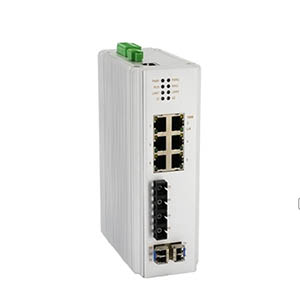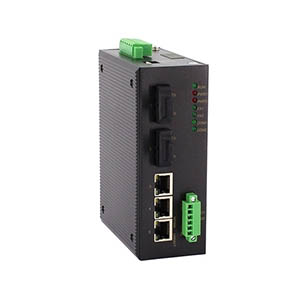How to Choose Right Industrial Ethernet Switch?
As automation matures and rises with the extensive use of industrial Ethernet and the establishment of large-scale industrial control networks. Industrial Ethernet switches are also widely used in the field of industrial control. At present, the three-layer industrial Ethernet switch shows a strong growth trend and is replacing routers in the local area network. Its huge market potential is attracting a large number of domestic and foreign manufacturers to join the competition. When choosing a switch ( managed switch or unmanaged switch), faced with such a variety of brands, what aspects should users start with when choosing is a problem that must be solved.
Distributed better than centralized
Different brands of switches adopt different switch technologies, which can be mainly divided into two types: centralized and distributed. Traditional bus-type switching fabric modules are centralized, while modern switching matrix modules are distributed. As the amount of audio, video and data information running in the enterprise intranet is increasing, the requirements for the processing capacity of the switch are also increasing. In order to achieve high-speed non-blocking exchange under the condition of high port density, distributed Layer 3 industrial Ethernet switches are the wise choice. Because the bus type switch module still cannot avoid conflicts in the Ethernet environment, but the matrix type just avoids the conflict phenomenon during port switching.
Focus on throughput at full configuration
Like any electronic product, when choosing a three-layer industrial Ethernet switch, we must first analyze the performance indicators of various products. But in the face of such factors as switching capacity (GBPS), backplane bandwidth (GBPS), processing capability (MPPS), and many other technical indicators, you had better stick to the indicator of "throughput at full configuration". Because users of other technical indicators generally do not have the ability to measure, only throughput, which is the test instruments that user can use Smart Bits and IXIA directly to measure and verify.
Focus on latency and jitter indicators
Almost all enterprise intranets are high-speed LANs. One of their purposes is to transmit large-capacity multimedia data such as audio and video. These large-capacity multimedia data packets are most taboo of long delays and data packet loss that cause jitter in information transmission. The delay of some traditional centralized switches is as high as 2s, while the delay of some modern distributed switches is only about 20ms, and the difference between the two is hundreds of times. The causes of high latency usually include blocked switching structures and excessive use of buffers. Therefore, paying attention to latency actually requires attention to the module structure of the product.
Determine the required port density and capacity.
The most important step is to determine the required port density and capacity, which also depend on what kind of port. Every company may have different ports, which suit different industral switches. ( For example, ATO has product 10 port industrial switch.) The port density and capacity will vary depending on the size and scope of your network. If you have a large network, you need to look at the number of ports on the switch.
Stable performance
Three-layer Industrial Ethernet switches are mostly used in the backbone and aggregation layers. If the performance is unstable, it will affect most of the hosts in the network system, or even the entire network system. Therefore, only a three-layer industrial Ethernet switch with stable performance is the guarantee for the continuous, reliable, safe and normal operation of the network system. Of course, stable performance seems abstract, and it seems that it needs historical testing to be convincing. In fact, it is not the case, because the performance of the equipment is actually achieved through a number of basic technical indicators and market reputation. So you can determine it through multiple metrics such as throughput, latency, frame loss rate, address table depth, end-of-line blocking, and many-to-one capabilities, as well as market application research.


